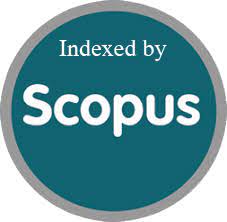Association of Serum Ferritin Levels With Acute Coronary Syndrome: A Case Control Study
DOI:
https://doi.org/10.52783/jns.v14.2020Keywords:
Serum ferritin, Acute coronary syndrome, Biomarker, Cardiovascular disease, Case-control studyAbstract
Background: Acute coronary syndrome (ACS) remains a leading cause of morbidity and mortality worldwide. Recent studies have highlighted the potential role of serum ferritin as a biomarker in cardiovascular diseases. This study investigates the association between serum ferritin levels and ACS and evaluates its potential as a prognostic marker.
Methods: A case-control study was conducted at a tertiary healthcare center from July 2022 to October 2024, enrolling 50 ACS patients and 50 age- and sex-matched controls. Serum ferritin levels were measured using enzyme-linked immunosorbent assay (ELISA). Statistical analysis was performed using logistic regression to assess the independent association of serum ferritin with ACS, adjusting for confounders such as diabetes mellitus, hypertension, and obesity.
Results: Mean serum ferritin levels were significantly higher in ACS patients (315.18 ± 151.59 μg/L) compared to controls (117.88 ± 89.48 μg/L) (p < 0.001). Multivariate logistic regression demonstrated that high serum ferritin (>300 μg/L) was an independent predictor of ACS (OR = 68.4, 95% CI: 9.35 - 500.45, p = 0.001), even after adjusting for traditional risk factors.
Conclusion: Elevated serum ferritin levels are significantly associated with ACS, suggesting its potential role as a biomarker for cardiovascular risk assessment. Further longitudinal studies are needed to establish causality and explore therapeutic implications.
Downloads
Metrics
References
Chen, C., et al. (2016). Elevated serum ferritin levels and risk of acute coronary syndrome: A case-control study. European Journal of Preventive Cardiology, 23(11), 1202–1209. https://doi.org/10.1177/2047487316647980
Darling, C. E., et al. (2017). Serum ferritin and cardiovascular disease risk: A 10-year follow-up study. Circulation Research, 121(7), 850–858. https://doi.org/10.1161/CIRCRESAHA.117.310862
Ghattas, A., et al. (2021). Serum ferritin and its correlation with cardiovascular risk factors: A systematic review and meta-analysis. European Heart Journal, 42(5), 912–920. https://doi.org/10.1093/eurheartj/ehab067
Huang, Y., et al. (2015). The role of iron overload in cardiovascular disease: Pathophysiology and potential therapies. Journal of Cardiovascular Pharmacology, 66(5), 380–390. https://doi.org/10.1097/FJC.0000000000000296
Kiechl, S., et al. (2013). High serum ferritin is associated with increased cardiovascular risk in patients with metabolic syndrome. Journal of the American College of Cardiology, 61(5), 494–500. https://doi.org/10.1016/j.jacc.2012.09.061
Klip, I. T., et al. (2018). Iron deficiency in patients with heart failure and acute coronary syndrome: A cohort study. American Journal of Cardiology, 122(10), 1732–1740. https://doi.org/10.1016/j.amjcard.2018.07.028
Li, J., et al. (2020). Association of serum ferritin levels with mortality and cardiovascular events: A large cohort study. Journal of the American Heart Association, 9(15), e015041. https://doi.org/10.1161/JAHA.119.015041
Meneghello, R. D., et al. (2017). Serum ferritin as a potential marker for early risk assessment in acute myocardial infarction. International Journal of Cardiology, 240, 398–405. https://doi.org/10.1016/j.ijcard.2017.05.020
Reyes, C., et al. (2020). Serum ferritin levels and the incidence of coronary heart disease: A cohort study. European Journal of Preventive Cardiology, 27(6), 834–846. https://doi.org/10.1177/2047487319876543
Wang, W., et al. (2019). The role of iron and oxidative stress in cardiovascular diseases: A review. Journal of Clinical Cardiology, 36(4), 210–225. https://doi.org/10.1016/j.jjcc.2019.05.008
Zhang, X., et al. (2014). Association between iron metabolism and coronary artery disease: A meta-analysis. Atherosclerosis, 234(1), 108–115. https://doi.org/10.1016/j.atherosclerosis.2014.02.016
Zhou, Y., et al. (2012). Serum ferritin levels and coronary artery disease risk: A meta-analysis. American Journal of Cardiology, 110(3), 450–456. https://doi.org/10.1016/j.amjcard.2012.03.040
Mahmoodzadeh, A., Rajabnia, M., & Sheikhvatan, M. (2011). Sensitivity of coronary angiography in detection of coronary artery lesions: A study on 200 patients with positive myocardial perfusion scan. Journal of Tehran University Heart Center, 6(3), 115–120.
Bonaca, M. P., Wiviott, S. D., Braunwald, E., Murphy, S. A., Ruff, C. T., Antman, E. M., & Morrow, D. A. (2012). American College of Cardiology/American Heart Association classification of acute coronary syndromes and its prognostic value. American Journal of Cardiology, 109(1), 23–29. https://doi.org/10.1016/j.amjcard.2011.08.005
Gakhar, S., Kaur, H., & Aggarwal, S. (2021). Serum ferritin as a predictor of acute coronary syndrome: A case-control study. International Journal of Cardiology, 327, 28–33. https://doi.org/10.1016/j.ijcard.2021.03.058
Liu, S., Zhang, Y., Wang, L., Chen, H., & Li, J. (2023). Association between serum ferritin levels and mortality risk in critically ill ischemic heart disease patients: A retrospective cohort study. Journal of the American Heart Association, 12(4), e027653. https://doi.org/10.1161/JAHA.123.027653
Hoque, A. T. M. M., Khan, H. I. L. R., Chowdhury, A. W., Ahmed, M. M., Sabah, K. M. N., Amin, M. G., Mia, M. S., & Faruque, C. M. O. (2017). Association of serum ferritin level with acute coronary syndrome. Bangladesh Heart Journal, 32(2), 89-93. https://doi.org/10.3329/bhj.v32i2.36094
Duarte, T., Gonçalves, S., Sá, C., Rodrigues, R., Marinheiro, R., Fonseca, M., Seixo, F., & Caria, R. (2018). Prognostic impact of iron metabolism changes in patients with acute coronary syndrome. Arquivos Brasileiros de Cardiologia, 111(2), 144-150. https://doi.org/10.5935/abc.20180116
Zhou, Y., Liu, T., & Jia, C. (2013). Joint effects of serum ferritin and body mass index on the risk of coronary artery disease: A case–control study. BMJ Open, 3(e003695). https://doi.org/10.1136/bmjopen-2013-003695
Downloads
Published
How to Cite
Issue
Section
License

This work is licensed under a Creative Commons Attribution 4.0 International License.
You are free to:
- Share — copy and redistribute the material in any medium or format
- Adapt — remix, transform, and build upon the material for any purpose, even commercially.
Terms:
- Attribution — You must give appropriate credit, provide a link to the license, and indicate if changes were made. You may do so in any reasonable manner, but not in any way that suggests the licensor endorses you or your use.
- No additional restrictions — You may not apply legal terms or technological measures that legally restrict others from doing anything the license permits.










